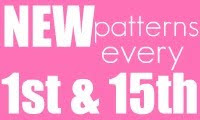...
When getting started, you must first learn your body frame. Listed below are all four of the bodies, along with their characteristics and you choose which one of them best describes your body (you may fall into one or a combination of more than one category). The overall goal is to draw the viewer’s eye up to the beauty of your face.
...
A-Frame

Body is narrower at the top half and wider at the lower hip and upper thigh area
Legs may be shorter and sometimes heavier
Upper torso may be average to long, firm and slender
When there is weight gain, it is usually in the upper thighs and hips
...
Goal: Balance shape by widening shoulders. This can be achieved by choosing garments with shoulder pads or sleeve detailing and horizontal necklines.
...
V-Frame
 Shoulders appear to be wider than the hips
Shoulders appear to be wider than the hipsBust is unusally large, with a shorter torso and high waist
Thighs and derriere are usually flat
Legs are thin
Tummy may be more prominent than bust
...
Goal: Give illusion of hourglass shape by widening hips. This can be achieved by chooing garments that have width and fullness in the skirt or pants, pockets at the hips and long tunic style tops.
...
H-Frame
 Body appears to be straigh up and down
Body appears to be straigh up and downThighs and derriere are usually flat
Legs may be longer
Bust is average to large
Weight gain is usually through the middle
...
Goal: Create hour glass figure with illusion of smaller waist. This can be achieved by choosing either a bloused garment with a flared skirt and belted waist, wrap tops, v necklines, and long tunic style tops.
...
8-Frame

Figure is curvy and perfectly balanced
Bust is full, waist is small, with average length
Hips are gently tapered, with good proportions to derriere
Leg length and upper torso are balanced
Weight gain is always evenly distributed
...
Goal: Emphasize figure; avoid clutter, fluff and tight fit. This can be achieved by choosing garments that fit the body and identify the waist, wrap tops, v and scoop necklines, shaped one-piece dresses.
































